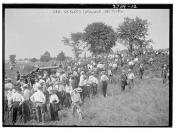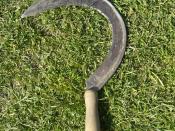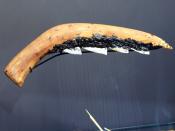In the course of our first semester we have been introduced to variety of different instruments. We were introduced to their history, use, significance and important role that each instrument plays in the clients' oral health. I have enjoyed anterior sickle scaler from the first day it has been introduced to us in Pre-Clinic and I was fascinated to do a further research on it and learn things that weren't covered in class lectures. Therefore, this report is going to be based on my research finding on anterior sickle scaler.
History and Interesting facts
Who invented scalers? This is unknown, but we know that invention goes way back to Ancient World and Middle Ages when scalers were popular but were not in very general use way until the eighteenth century.
What makes up the structure of the teeth? We know that its three different calcified tissues: enamel, dentine and cementum.
Early dentists knew that as well; they were convinced that in order to remove tartar you have to use fairly sharp instruments with some force. From the sources found Avicenna who lived around 980-1037 designed a collection of 14 scalers which were used on patients whose head he hold on his knees. In the following century, Cremona (1114-87) created eight different scalers. Couple centuries later, Walter Ryff included a series of 14 double-ended scalers in his 1545 publication Chirurgia Magna.
As I mentioned before, scaling became most popular during eighteens century. Pierre Fauchard (1678-1761) was the one who was the most specific about the instruments. He believed that the instruments had to be made of "good steel so that they are sharp and scrape wellù", therefore, gold and silver were inappropriate for it because they are not hard enough.
Fauchard believed that only five types of instruments were necessary:...


